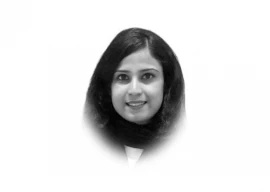
This raises a fundamental question about the identity of our elite. Who is Pakistan’s elite? Is it the same as in 1947 or has it changed? If so, what is its current shape? Due to lack of quality social science research in this country, we have failed to acknowledge the evolution of the elite.
Popularly, the word ‘elite’ is used as a derogatory term meaning powerful extortionists controlling the state and its resources. Elite is also considered synonymous with the landowning class. However, it is much more than that. Until the early 1970s, it also consisted of large business groups that came to be referred by Mahbubul Haq during the 1960s as the 22 most influential families. Sociologist and political scientist Hamza Alavi refers to the three classes of Pakistani elite: Feudal landowners, indigenous bourgeoisie and metropolitan capital.
Unfortunately, all this solid research is forgotten and people now have their own definition of what is ‘elite’. There is the MQM definition which includes landowners and sugar-mill owners, but excludes business and industry in Karachi. The PML-N’s Shahbaz Sharif also warns against the elite by which he means those in the ruling PPP. Then there is Imran Khan’s terminology of the decadent elite that comprises all his opponents, but not the big-wigs who work with him. Not to forget the definition of religious parties that mainly includes people with a western-liberal leaning. All these approaches are reductionist and consider socio-economic evolution as a static process. In Pakistan’s case, the civil and military bureaucracy has remained politically powerful for at least 33-35 years, which means that other social groups were added to the list.
Pakistan’s elite has evolved and also includes the ‘new rich’ — the upper-middle and the intermediary class (falling between the middle and upper-middle). These new entrants are not distinguished by birth, but by their capacity to generate capital, enter into a partnership with the permanent establishment, manipulate the state — its power and resources — and benefit from foreign capital inflows. This structure also means that birth is a secondary issue. So today, the Altaf Hussain clan, Asif Zardari, Imran Khan, Tariq Aziz, Generals Aslam Beg, Hamid Gul, Pervez Musharraf; entrepreneurs like Malik Riaz; media moghuls like Mir Shakeelur Rehman; stockbrokers like Aqeel Dedhi, or the LeT’s Hafiz Saeed and similar other militant leaders are the new elite versus the old such as the Jatois, Bhuttos, Talpurs, Sehgals and the Adamjees, who are now less important. The NGO sector is also part of the new elite.
The access to foreign capital and abundance of black money backed by state power, has added new names to the elite list. In the past four decades or more, individuals and groups have used their position in relation to the traditional power centres and the state to acquire both capital and power. These two elements put them in a position where they can flout law without impunity, or use the state and its resources to extort greater power and influence. The extent of connectivity with the state allows them to enhance their financial worth. For instance, the elite of the development community use their access to the state to draw wealth from foreign donors and also use their association with the donor community to enhance their influence in the state. The process is cyclical.
More important, this elite is interconnected and has taken the shape of a large fraternity of common interests. It is due to the expansion of the elite and its incestuous nature that Pakistan may not see a Tunisia kind of change. The stakeholders might want chaos, but they do not want to upset the gravy train.
Published in The Express Tribune, February 6th, 2011.

1725030039-0/Untitled-design-(2)1725030039-0-165x106.webp)











COMMENTS (40)
Comments are moderated and generally will be posted if they are on-topic and not abusive.
For more information, please see our Comments FAQ